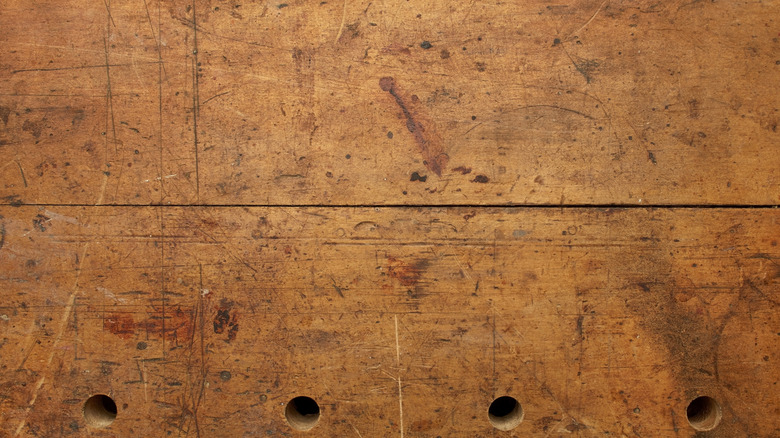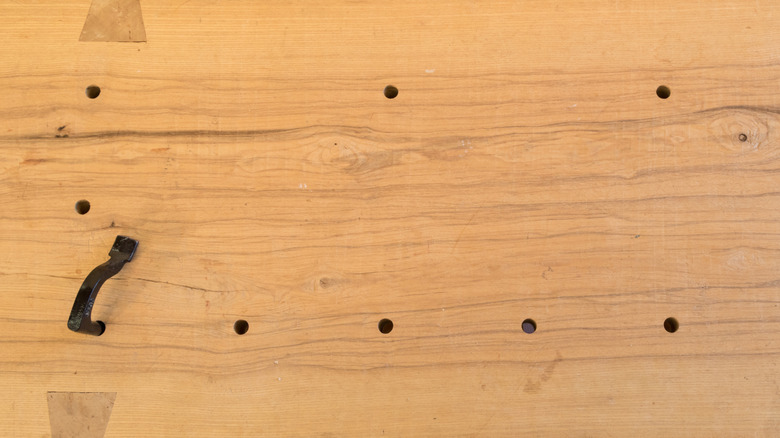Why Do Woodworking Benches Have Holes? Here's What They're For
If you've ever visited a woodworker's workshop, you may have taken particular note of their hefty bench. Technically, any workbench could be a woodworking bench if you work with wood on it, but a proper woodworking bench may have a distinctive feature that you might not see on other types of workbench: large holes dotting the outer rim.
These holes are known as dog holes. The purpose of a dog hole on a woodworker's bench is to create additional modularity while working. With a simple framework of a sturdy hole, reinforced with metal, plastic, or other types of wood, you create sturdy points on which you can connect various types of holds and gadgets for all your woodworking needs. Premade woodworking stations from one of the major brands may come with dogs pre-drilled, though you can also make your own from scratch with a power drill, provided you don't mind taking the effort to put a bunch of holes in a large slab of wood.
Dog holes allow you to attach various tools and clamps
The major appeal of dog holes in a woodworking bench is that they can serve as an easy means of holding down a woodworking project. For example, let's say you have an adjustable vise attached to the side of your table. On its own, a vise would only be able to safely hold a piece of wood at certain angles. However, if you were to insert a metal dowel into a dog hole, also known as a bench dog, you create a sturdy, static point. Place your piece of wood against the bench dog, pull the vise in, and the whole thing is held firmly in place, ready for you to go at it with your favorite woodworking tools from Harbor Freight. If the vise isn't high or large enough to effectively secure the wood, you may be able to drill another dog hole right into the vise itself, then add another bench dog to serve as a second anchor point.
Speaking of anchoring, that's the other big draw of having dog holes in your woodworking bench: anchoring down tools and accessories. There are various gadgets you can secure to a woodworking bench by simply slotting them into a dog hole. If you didn't have a vise for the previous scenario, you could instead insert a couple of clamps or holdfasts into your dog holes to keep the piece of wood held down. Dog holes can also be used to hold up guide rails for taking precise measurements on wood while cutting, or through the use of special connecting dogs, attach entire sub-benches to your workbench.

